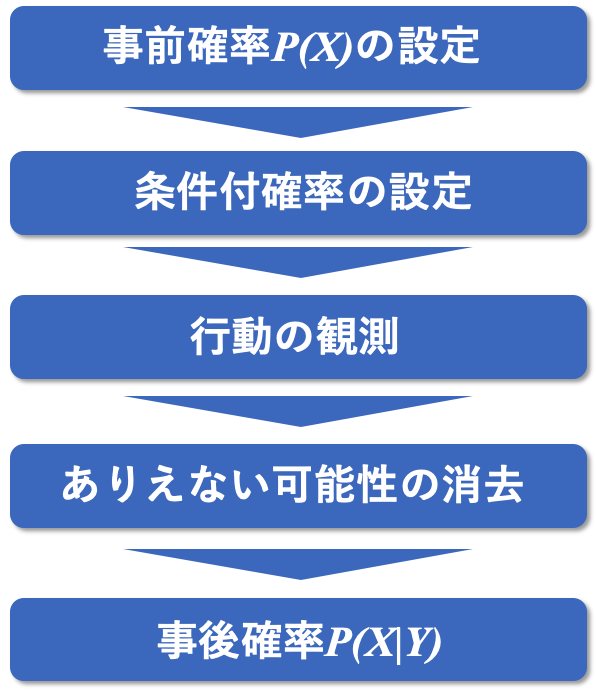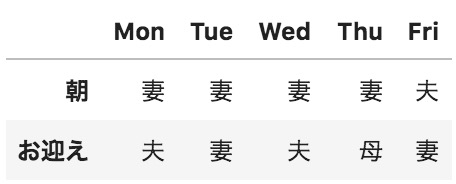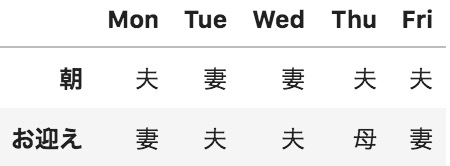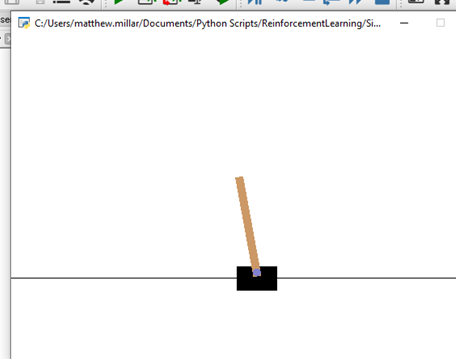By Matthew Millar R&D Scientist at ユニファ
Summary:
This
blog is looking at finding the best method for future price prediction for
stocks in general. This blog will
look at methods for calculating production that is in current research and uses
in the industry. Also, it will
cover; statistical methods, machine learning, artificial neural networks, and
hybrid models. From the current
research, hybrid models were found to give the best results over pure
statistical methods and pure machine learning and artificial neural network
methodologies.
Introduction:
Stock
market prediction is a method to discover possible future values of a stock. With successful predictions of prices,
higher profits can be gained, but on the other hand with bad predictions can
produce losses. There is a standard
thought that the market does not follow a standard flow, so predictions using
statistics or models would be an impossible task due to the idea that technical
factors cannot show all of the variables that help
shape the movement of the stock market.
On the contrary, the efficient market hypothesis would otherwise
suggest, a stock price already reflects all the information that could affect
any price changes except for unknown information which is always a level of
unpredictability.
Fundamental
analysis looks at the company rather than just the numbers or charts. This involves looking at the past
performance and credibility of its accounts. This approach is mainly used by fund
managers as this is one of the traditional methods that use publicly available
information on the company.
Technical analysis does not care about the company's fundamentals but
mainly look at the trends of the stocks past performance in a time series
analysis. These are the two more
common ways of stock price prediction.
Current trends in price forecasting are the use of Data mining
technologies. The use of Artificial
Neural Networks (ANN), Machine Learning (ML) algorithms, and statistical models
are now being used to help in prediction.
Due
to the increasing amount of data from trades, data mining and data analysis on
this amount of data can be very difficult using standard methods. With the amount of data that is produced
daily, this could be considered on the level of Big Data analytics. Due to the ever-changing values of the
data throughout the day, it is difficult to monitor every stock that is
available, let alone to perform prediction on price movements. This is where the use of algorithms and
models come into play. With these
algorithmic models, predictions can be made with relative accuracy and can give
investors better insight into the actual data's value without all of the excessive amounts of data review.
Goal:
The
goal of this blog is to look at possible methods for prediction using ML, ANN,
and statistical models. Statistical
methods are the most commonly used method for price prediction currently, but
will the use of ML, ANN, or hybrid systems can give a more accurate prediction.
It will continue to look at statistical methods, pure ML, pure ANN, and hybrid models,
a more comprehensive list can be made, and a better idea of which approach
could be better for forecasting purposes.
Methodology Review:
There
are a few emerging methods that are gaining popularity and applications over
the traditional financial approaches.
These methods are based on ML, statistical models, ANN, or a hybrid
model. Some of the proposed models
use a purely statistical method, some use pure ML or ANN, and others use a
hybrid approach combining both statistical and ML or ANN together. Each model has its pros and cons for use
and a problem that solves best.
Statistical Methods:
By
using data analysis, one can predict the closing price of a certain stock. Currently, there are six common methods
or data analysis to make a predictive model. Some of these models are common Stock
price models that are used currently in the stock market and by fund
managers. These five models are
must be in agreement of the movement direction in
order for the price movement to be predicted most accurately. These models are; Typical Price (TP), Chaikin Money Flow Indicator (CMI), Stochastic Momentum
Index (SMI),
Relative Strength Index (RSI), Bollinger Bands (BB),
Moving Average(MA), and Bollinger Signal. By combining these algorithms, a more
accurate prediction can be made by looking at upper and lower bands, if the
price goes above the upper band then that indicates a positive selling point
and if it goes below the lower band it indicates a positive buy point. This method of combining the results of
other models does give a better chance of price change than just one of the
single statistical models (Kannan, Sekar, Sathik,
& Arumugam, 2010).
Machine Learning Artificial Neural
Network Methods:
Text
mining has also been used in stock prices trends, especially for inter day
prices trends. By using text mining
techniques, a 46% chance of knowing if a stock will increase or decrease by
0.5% or remain in the positive and negative range, which was more significant
than a random predictor which only gave around 33% accuracy for stock price
fluctuation prediction. By using a
process of text mining, by gathering press releases and preprocess them into
usable data and categorizing them into different news types. Trading rules can then be derived from
this data for particular stocks (Mittermayer,
2004).
Pure
ANN is used currently for stock prediction as well as analysis. The users have given very reliable
results as ANN are good at working with errors, can use large and complex data,
and can produce useful prediction results.
For forecasting just one stock, there is a lot of interacting input
series that is needed. Each neuron
can represent a decision process.
This will allow for ANN to represent the interaction between the decisions
of everyone in the market. This
will allow for the ANN to completely model a market. ANN is very effective at predicting
stock prices (Kimoto,
Asakawa, Yoda, & Takeoka, 1990; Li, & Ma, 2010),
ANN
is gaining acceptance in the financial sector. There are many techniques and application
that look into using AI in creating prediction
models. One common method is to use
a genetic algorithm (GA) to aid in the training or the ANN for the prediction
of stock prices. The GA, in most
cases, are used for training the network, selecting the feature subset, and
aiding in topology optimization. A GA
can be used to help in the feature discretionary and determination of
connection weights for an ANN (Kim and Ham, 2000).
Hybrid Models:
ML
combined with an AI is a very good combination of two very powerful
methodologies. An ML model can be
used for data mining to define and predict the relationships between both
financial and economic variables.
The examination of the level estimation and classification can be used
for a prediction of future values.
Multiple studies show that by using a classification model, a trading
strategy can generate higher risk-adjusted profits than the traditional buy and
hold strategy as well as the level estimation prediction capability of an ANN
or linear regression (Enke and Thawornwong,
2005). ML is mainly based on
supervised learning which is not appropriate for long term goals. But, by using reinforcement learning ML,
is more suitable for modeling real-world situations much like stock price
prediction. By looking at stock
price prediction as a Markov process, ML with the TD(0)
reinforcement learning algorithm that focuses on learning from experiences
which are combined with an ANN is taught the states of each stock price trend
at given times. There is an issue
with this in that if the prediction period is either very short or very long,
the accuracy decays drastically. So this would only be useful for mid-range prediction for
prices (Lee, 2001). Another Hybrid
model that has given great accuracy (around 77%) is combining a decision tree
and an ANN together. By using the
decision tree to create the rules for the forecasting decision and the ANN to
generate the prediction. This
combination is more accurate than either an ANN or a decision tree separately
(Tsai and Wang, 2009).
Other Useful Models:
Support
Vector Machines have also been used for stock market prediction. SVM does perform better than random guessing
but are out shown by hybrid models.
A combination of a genetic algorithm and an SVM can produce a better
result than even an SVM alone. By
using some technical analysis fields used as input features. This method was used to not only produce
a forecast for the stock that is being looked at as well as any other stock
that has a correlation between each other and the target stock. This hybrid significantly can outperform
a standalone SVM (Choudhry and Garg, 2008).
Discussion:
There
are many ways to produce a future value prediction, though some are slightly
better and more accurate than others.
Statistical analysis is the most common approach to prediction. Linear regression, logistic regression,
time series models, etc... are some of the more common ways of predicting
future values. But,
these methods may not be the best for more complex and dynamic data sets. If the data is not the same type, linear
regression may have poor results.
This is where an ANN or ML model comes in. These can produce a better result which
a higher accuracy than a purely statistical approach as they can work with the
complex systems of a market. In the
pure form, an ANN or ML can produce better accuracy over many statistical
methods for most stock price predictions.
But, by using hybrid ANN, an even more accurate and useful model can be
done. By combining a DT or a GA
with an ANN, a greater accuracy over the two pure methods can be gained.
Reference:
Choudhry, R.,
& Garg, K. (2008). A Hybrid Machine Learning System for Stock Market
Forecasting. World Academy of Science, Engineering and Technology International
Journal of Computer and Information Engineering, 2(3).
Enke, D.,
& Thawornwong, S. (2005). The use of data mining
and neural networks for forecasting stock market returns. Expert Systems
with Applications, 29(4), 927-940.
Kannan, K.,
Sekar, P., Sathik, M.,
& Arumugam, P. (2010). Financial Stock Market Forecast using Data Mining
Techniques. Proceedings of the International MultiConferences
of Engineers and Computer Scientists, 1.
Kim, K.,
& Han, I. (2000). Genetic algorithms approach to feature discretization in
artificial neural networks for the prediction of stock price index. Expert
Systems with Applications, 19(2), 125-132.
Kimoto, T.,
Asakawa, K., Yoda, M., & Takeoka, M. (1990).
Stock market prediction system with modular neural networks. 1990 IJCNN
International Joint Conference on Neural Networks.
Lee, J. W.
(2001). Stock price prediction using reinforcement learning. ISIE 2001.
2001 IEEE International Symposium on Industrial Electronics Proceedings (Cat.
No.01TH8570).
Lin, Tom C.
W., The New Investor. 60 UCLA Law Review 678 (2013); 60 UCLA Law Review 678
(2013); Temple University Legal Studies Research Paper No. 2013-45. Available
at SSRN: https://ssrn.com/abstract=2227498
Li, Y., &
Ma, W. (2010)Applications of Artificial Neural Networks
in Financial Economics: A Survey. 2010 International Symposium on
Computational Intelligence and Design, Computational Intelligence and Design
(ISCID), 2010 International Symposium on, 211.
Mittermayer,
M. (2004). Forecasting Intraday Stock Price Trends with Text Mining
Techniques. E Proceedings of the Hawai'i International Conference on
System Sciences, January 5 – 8, 2004, Big Island, Hawaii.
Tsai,
C. Wang, S. (2009). Stock Price Forecasting by Hybrid Machine Learning
Techniques. Proceedings of the International MultiConference
of Engineers and Computer Scientist 2009 Vol1 IMECS 2009. Vol 1

)」割合が10%(0.1)で、「興味ない(
)」割合が90%(0.9)だったとします。そうすると、事前確率は以下のように表せます。
)」割合が80%(0.8)
)」割合が20%(0.2)
)」割合が40%(0.4)
)」割合が60%(0.6)
を求めます。
を求めます。








